
How to Use MQ-5: Examples, Pinouts, and Specs
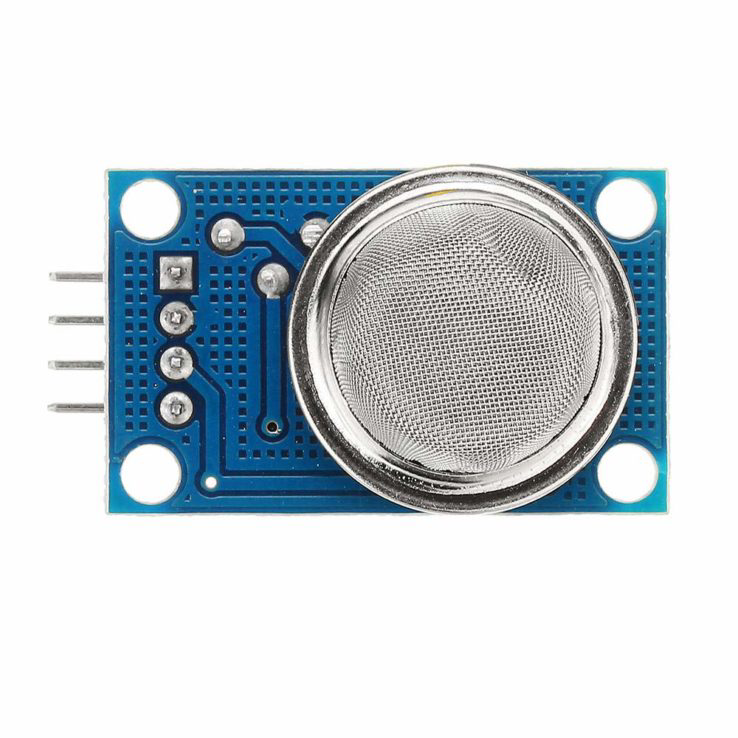
 Design with MQ-5 in Cirkit Designer
Design with MQ-5 in Cirkit DesignerIntroduction
The MQ-5 is a versatile gas sensor designed to detect various gases, including natural gas, liquefied petroleum gas (LPG), and other combustible gases. It operates on the principle of resistive change, where the sensor's resistance varies in the presence of target gases. This change is converted into an analog output, making it easy to interface with microcontrollers and other electronic systems.
Explore Projects Built with MQ-5
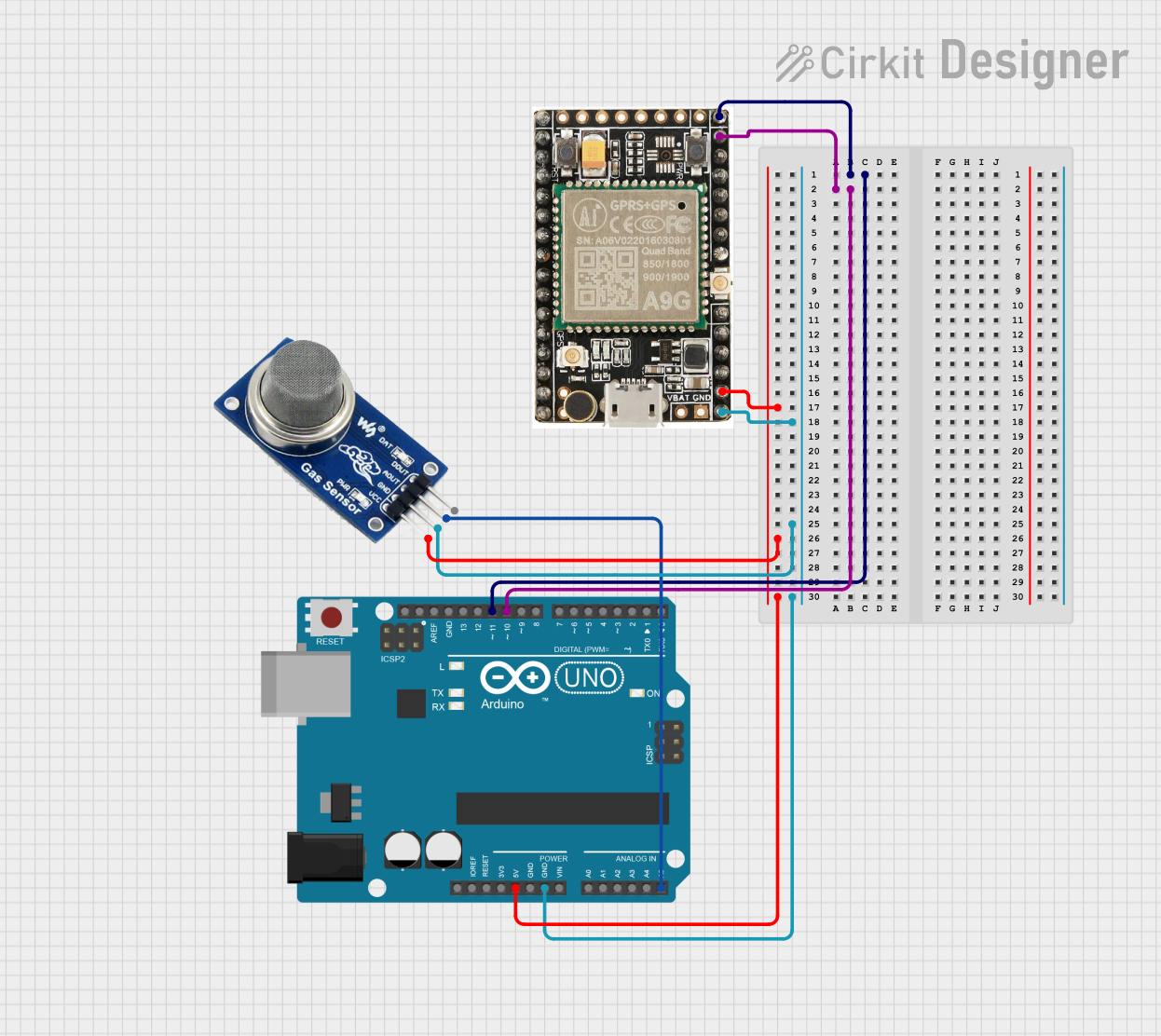
 Open Project in Cirkit Designer
Open Project in Cirkit Designer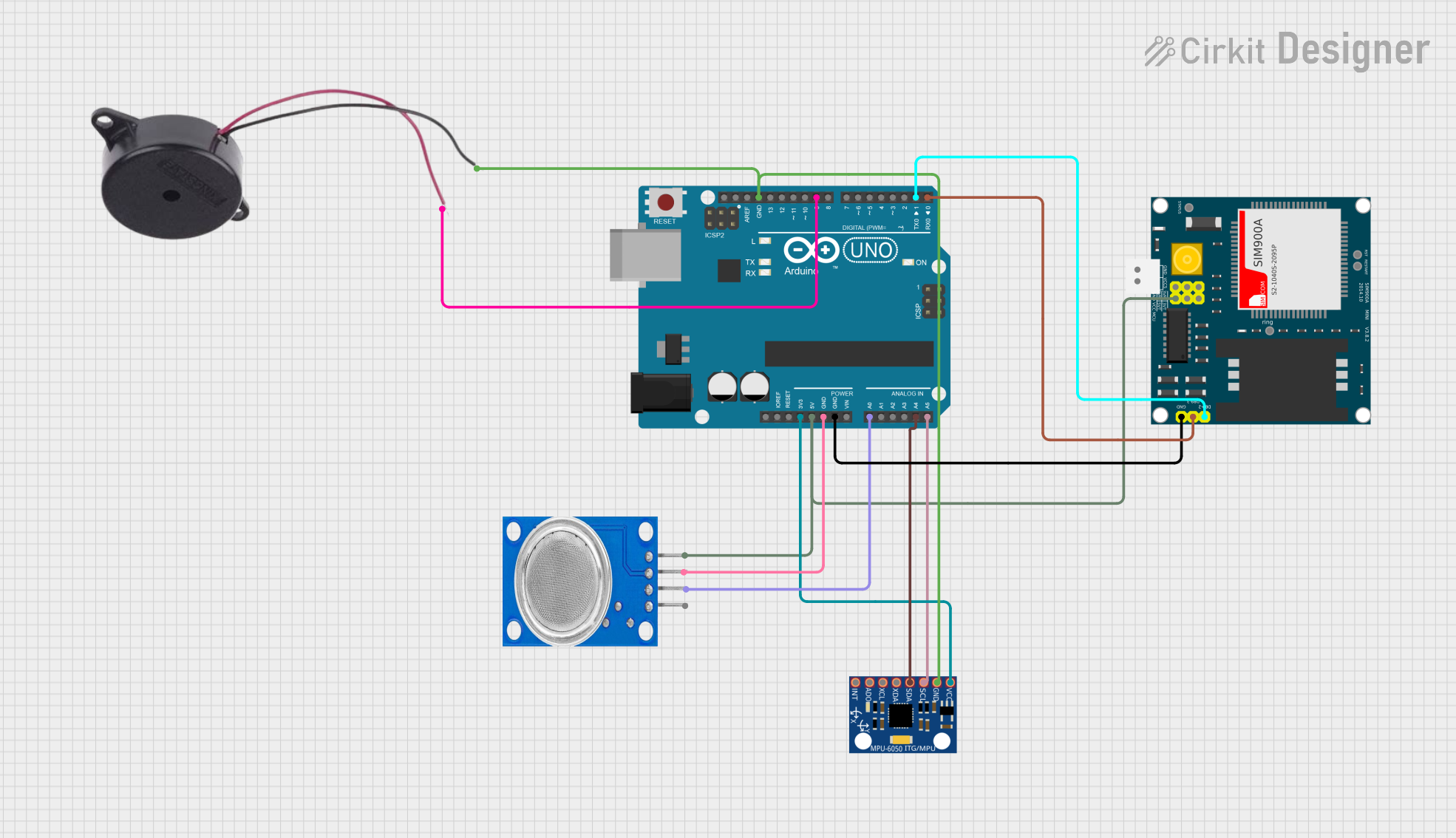
 Open Project in Cirkit Designer
Open Project in Cirkit Designer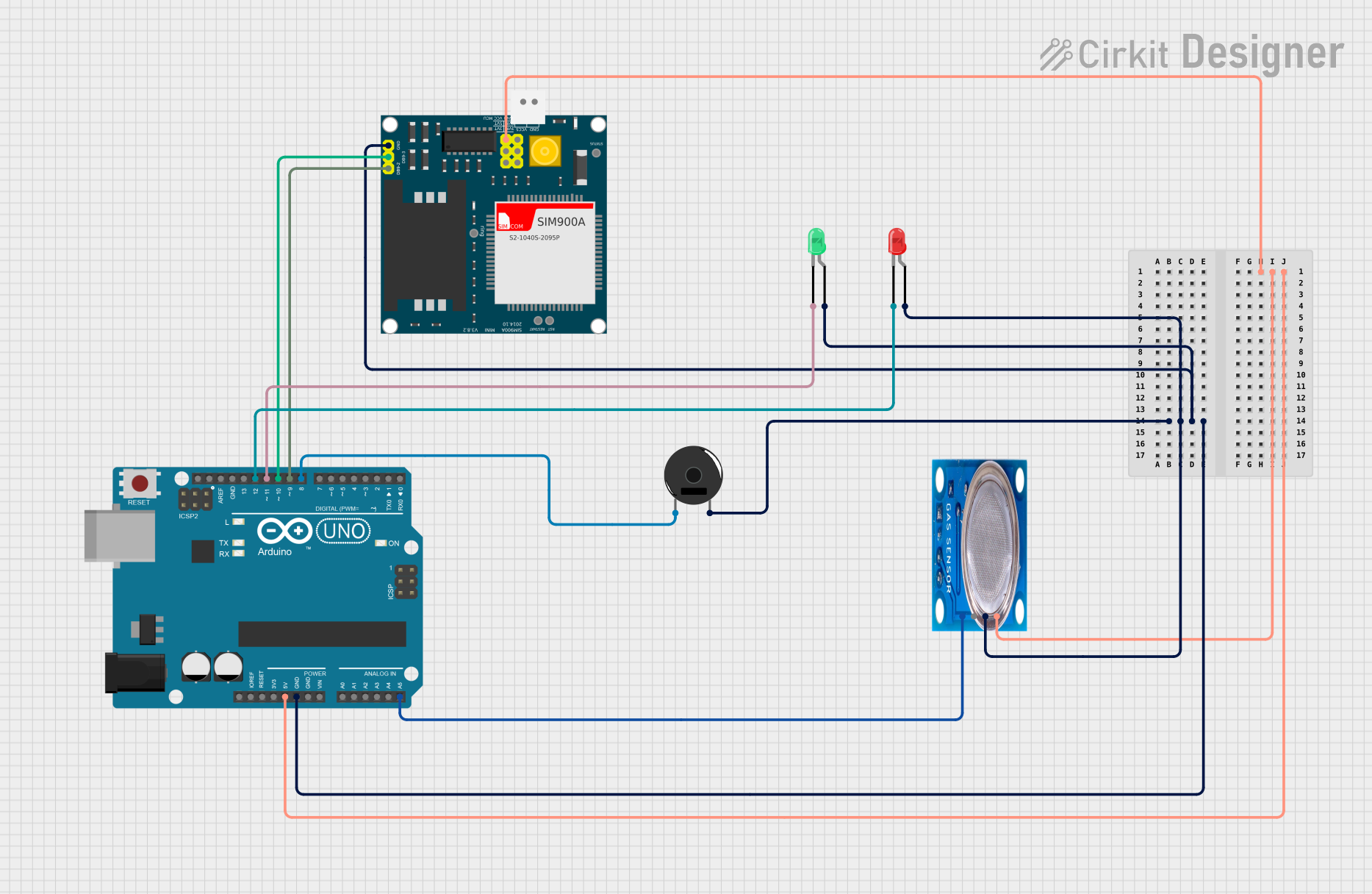
 Open Project in Cirkit Designer
Open Project in Cirkit Designer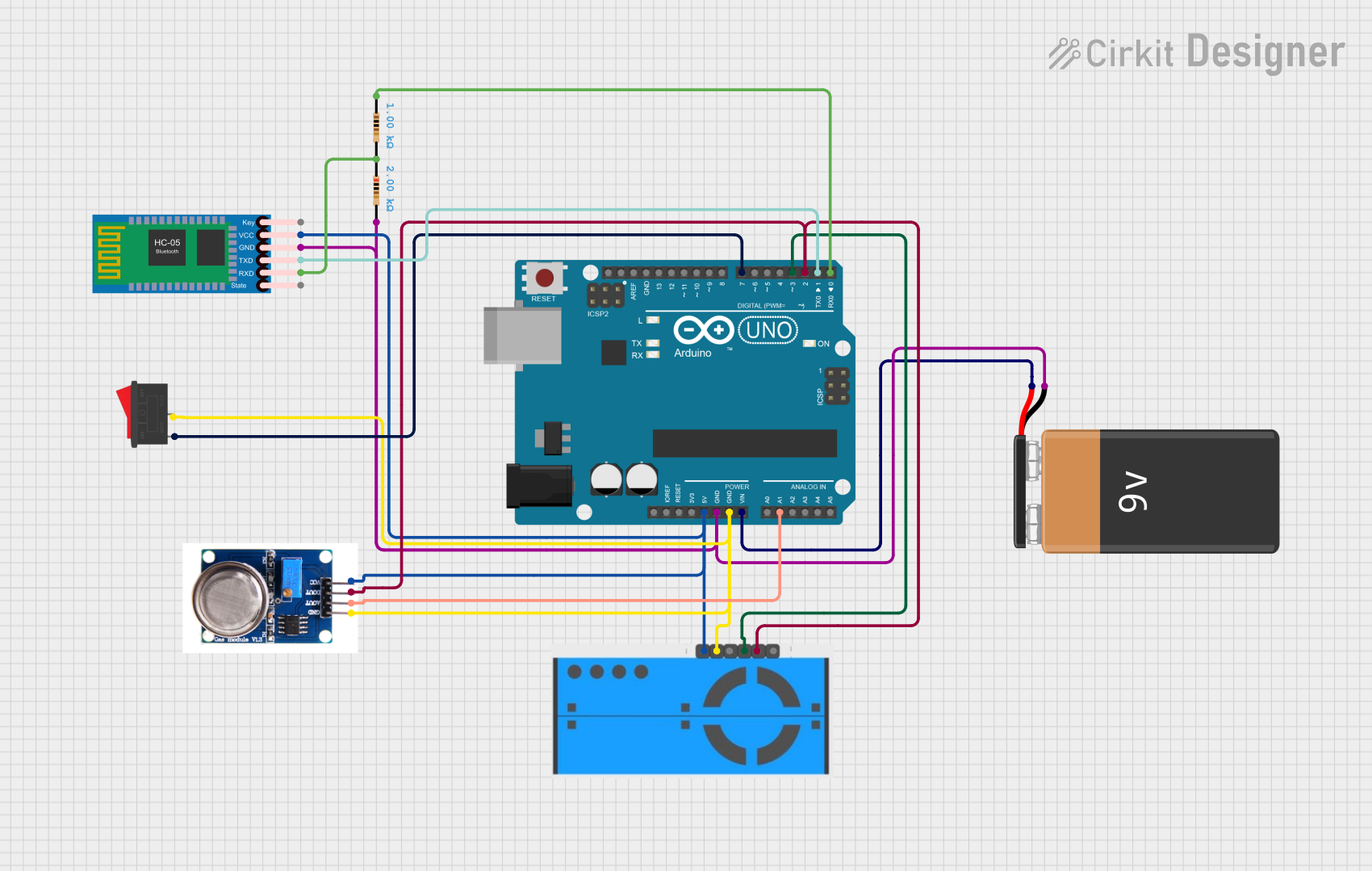
 Open Project in Cirkit Designer
Open Project in Cirkit DesignerExplore Projects Built with MQ-5

 Open Project in Cirkit Designer
Open Project in Cirkit Designer
 Open Project in Cirkit Designer
Open Project in Cirkit Designer
 Open Project in Cirkit Designer
Open Project in Cirkit Designer
 Open Project in Cirkit Designer
Open Project in Cirkit DesignerCommon Applications and Use Cases
- Gas leak detection in homes and industries
- Safety systems for detecting combustible gases
- Air quality monitoring
- IoT-based gas monitoring systems
- Automotive applications for gas detection
Technical Specifications
The MQ-5 sensor is designed for ease of use and reliable performance. Below are its key technical details:
| Parameter | Value |
|---|---|
| Operating Voltage | 5V DC |
| Load Resistance (RL) | Adjustable (typically 10 kΩ) |
| Heater Resistance (RH) | 31 Ω ± 3 Ω |
| Heating Voltage (VH) | 5V ± 0.2V |
| Sensing Range | 200 ppm to 10,000 ppm |
| Preheat Time | ≥ 24 hours for stable operation |
| Output Signal | Analog voltage |
| Operating Temperature | -10°C to 50°C |
| Humidity Range | ≤ 95% RH |
| Power Consumption | ≤ 800 mW |
Pin Configuration and Descriptions
The MQ-5 sensor typically comes in a module form with the following pinout:
| Pin | Name | Description |
|---|---|---|
| 1 | VCC | Power supply pin (5V DC) |
| 2 | GND | Ground pin |
| 3 | AOUT | Analog output pin, provides a voltage proportional to the gas concentration |
| 4 | DOUT | Digital output pin, triggers when gas concentration exceeds a preset threshold |
Note: The digital output (DOUT) is available only on MQ-5 modules with an onboard comparator circuit.
Usage Instructions
How to Use the MQ-5 in a Circuit
- Power the Sensor: Connect the VCC pin to a 5V DC power supply and the GND pin to ground.
- Connect the Output:
- For analog readings, connect the AOUT pin to an analog input pin of your microcontroller.
- For digital readings, connect the DOUT pin to a digital input pin. Adjust the onboard potentiometer to set the threshold level.
- Preheat the Sensor: Allow the sensor to preheat for at least 24 hours for optimal accuracy.
- Read the Output:
- The analog output voltage (AOUT) increases with the concentration of the target gas.
- The digital output (DOUT) goes HIGH when the gas concentration exceeds the preset threshold.
Important Considerations and Best Practices
- Preheating: The sensor requires a preheating period of at least 24 hours for stable and accurate readings.
- Ventilation: Ensure proper ventilation around the sensor to avoid saturation and false readings.
- Calibration: Calibrate the sensor in a controlled environment with known gas concentrations for accurate measurements.
- Avoid Contaminants: Keep the sensor away from water, oil, and other contaminants that may damage the sensing element.
- Power Supply: Use a stable 5V power supply to avoid fluctuations in the sensor's output.
Example: Using MQ-5 with Arduino UNO
Below is an example of how to interface the MQ-5 sensor with an Arduino UNO to read analog gas concentration values:
// MQ-5 Gas Sensor Example with Arduino UNO
// Connect AOUT to Arduino A0, VCC to 5V, and GND to GND
const int gasSensorPin = A0; // Analog pin connected to MQ-5 AOUT
void setup() {
Serial.begin(9600); // Initialize serial communication at 9600 baud
Serial.println("MQ-5 Gas Sensor Test");
}
void loop() {
int sensorValue = analogRead(gasSensorPin); // Read analog value from MQ-5
float voltage = sensorValue * (5.0 / 1023.0); // Convert to voltage (0-5V)
// Print the sensor value and voltage to the Serial Monitor
Serial.print("Sensor Value: ");
Serial.print(sensorValue);
Serial.print(" | Voltage: ");
Serial.print(voltage);
Serial.println(" V");
delay(1000); // Wait for 1 second before the next reading
}
Note: The analog readings from the MQ-5 sensor are not directly in ppm. To convert to ppm, you need to calibrate the sensor using known gas concentrations and derive a conversion formula.
Troubleshooting and FAQs
Common Issues and Solutions
No Output or Incorrect Readings:
- Cause: Insufficient preheating time.
- Solution: Ensure the sensor is preheated for at least 24 hours before use.
Fluctuating Analog Output:
- Cause: Unstable power supply or environmental noise.
- Solution: Use a regulated 5V power supply and ensure proper grounding.
Digital Output Not Triggering:
- Cause: Incorrect threshold setting on the potentiometer.
- Solution: Adjust the potentiometer to set the desired gas concentration threshold.
Sensor Not Responding to Gas:
- Cause: Sensor contamination or damage.
- Solution: Replace the sensor if it has been exposed to water, oil, or other contaminants.
FAQs
Q1: Can the MQ-5 detect gases other than natural gas and LPG?
A1: Yes, the MQ-5 can detect other combustible gases, but its sensitivity and accuracy may vary. Refer to the sensor's datasheet for detailed sensitivity characteristics.
Q2: How do I calibrate the MQ-5 sensor?
A2: Expose the sensor to a known concentration of gas and record the analog output. Use this data to derive a formula for converting the sensor's output to ppm.
Q3: Can I use the MQ-5 with a 3.3V microcontroller?
A3: The MQ-5 requires a 5V power supply for the heater. However, you can use a voltage divider or level shifter to interface the analog output with a 3.3V microcontroller.
Q4: How long does the MQ-5 sensor last?
A4: The sensor's lifespan depends on usage and environmental conditions. Under normal conditions, it can last several years.
By following this documentation, you can effectively use the MQ-5 gas sensor in your projects for reliable gas detection and monitoring.